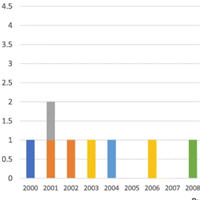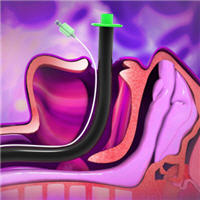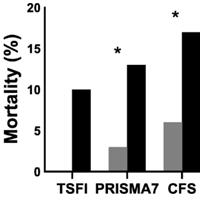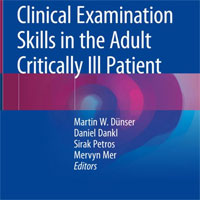Tag: trauma

Impact of Marijuana on Venous Thromboembolic Events
Tetrahydrocannabinoids (THC) exposure increases the risk of TEC in patients with trauma. Early identification and treatment for TEC is required to improve outcomes in this high-risk subset of trauma patients. We performed... read more

Major Trauma Definition Using Different Revisions of the Abbreviated Injury Scale
Injury Severity Score (ISS) 08 ≥ 11 and ISS 15 ≥ 12 perform similarly to a threshold ISS 98 ≥ 16 for in-hospital mortality and ICU admission. This confirms studies evaluating mapped datasets, and is the... read more

Randomised controlled trials in pre-hospital trauma
This mapping review has highlighted that evidence from trials in prehospital trauma is sparse and where trials have been completed, the reporting is generally poor and study designs sub-optimal. There is a continued need,... read more

Defining Major Trauma: a Delphi Study
Based upon the output of this Delphi study, major trauma may be defined as: "Significant injury or injuries that have potential to be life-threatening or life-changing sustained from either high energy mechanisms or low energy... read more

Safety of Arterial Catheterization Using the Distal Radial Approach in ICU Management
Distal radial approach (DRA) may be a safe option for insertion of a new A-line in the ICU. The study included 20 patients with a median age of 70 (interquartile range (IQR): 58.5–77) years: 10 patients with traumas,... read more

Optimal Needle Position for Decompression of Tension Pneumothorax
Tension Pneumothorax (TP) can occur as a potentially life-threatening complication of chest trauma. With the risk of respiratory and cardiac arrest, an immediate temporizing intervention for this condition is required by... read more

Prehospital Management of Trauma Patients with Rib Fractures
Rib fractures are associated with a direct, blunt force trauma to the thorax. It is estimated that 10% of all patients who were admitted to the hospital after blunt chest trauma have at least one rib fracture. In the prehospital... read more

COVID-19: Critical Care and Airway Management Issues
Among patients hospitalized with coronavirus disease 2019 (COVID-19), up to one-quarter require intensive care unit (ICU) admission. Profound hypoxemic respiratory failure from acute respiratory distress syndrome (ARDS)... read more

Feasibility and Accuracy of ED Frailty Identification in Older Trauma Patients
This prospective study has demonstrated that screening for frailty in older major trauma patients within the Emergency Department is feasible and accurate using Clinical Frailty Scale (CFS). Patients age 65 years and... read more

Management of Severe Traumatic Brain Injury
"Management of Severe Traumatic Brain Injury" is a practical, comprehensive guide to the treatment of patients (both adults and children) with such injuries, from the time of initial contact through to the rehabilitation... read more

Clinical Examination Skills in the Adult Critically Ill Patient
This well-illustrated book provides detailed guidance on all aspects of physical examination in patients requiring emergency or intensive care. After an introductory section covering basic principles and the recognition of... read more

Retrospective validation of a risk stratification tool developed for the management of patients with blunt chest trauma
The STUMBL score at a cut‐off of 15 predicted prolonged LOS and a score >18 predicted mortality sufficiently to be clinically useful for these outcomes. The STUMBL Score is composed of five simple predictors; patient... read more

Barotrauma in Mechanically-ventilated Patients with COVID-2019
Within the limits of a survey, patients with COVID-19 might be at high risk for barotrauma during invasive (and allegedly lung-protective) mechanical ventilation. The response rate was 38/61 (62%). The incidence of... read more

Rapid detection of clinically-relevant plasma direct oral anticoagulant levels following acute traumatic injury
In urgent clinical situations, such as trauma, urgent surgery or before thrombolysis, rapid quantification of direct oral anticoagulant plasma drug levels is warranted. Using the ClotPro® analyser, we assessed two novel... read more




